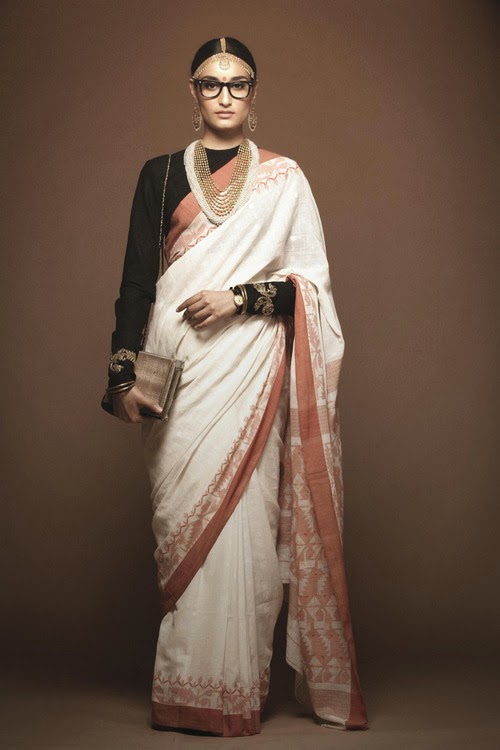Sabyasachi Mukherjee on Craftsmanship
- Team Aluminr
- Feb 22, 2019
- 4 min read
Kolkata based designer Sabyasachi Mukherjee has built a business with an annual turnover exceeding 100Cr (USD 16M), crediting his success to working closely and consistently at the grassroots level. This foresight — to capitalize on traditional craft techniques amongst his bridal client base whilst meaningfully supporting the livelihoods of those he employs — has afforded him a breadth of experience and perspective.
Craft as India’s Backbone
Let’s admit it: we’ve all made our millions because we are craft-dependent, and the world seeks it out. Unfortunately, what fashion has done to this country is that it has made it socially dysfunctional. India has always been, in many ways, a maximalist country. We truly like embellishment and handicraft, and so when you bring ideas like minimalism from the West, which do not belong here, you confuse buyers. They start to feel that being Indian is not such a good thing, which is unforgivable. It disrupts DNA. You lose the very strength that could make you a superpower. The idea of luxury comes from a point of authority, not subjugation.
“
The French are celebrated for being French. When you are who you are, people are attracted to you. The global audience wants to speak to you. That is why when women wear saris or Indian textiles abroad the reaction is, “This is fascinating! Where did you get it from?” What clothing can do is engender conversation and when you deny yourself cultural clothing, you’re denying yourself the opportunity to open up to the world.
— Sabyasachi
Responsibility as a Designer
I see it as convincing craftsmen not to give up their trade. Our commitment lies in creating grassroots-level employment; otherwise, these people will completely lose touch. Patan Patola, for instance, is a family trade wherein the children go off to study, and very few families know how to maintain the process. If you don’t create a demand and supply by creating awareness within the market … I have earlier worked closely with actors like Vidya Balan to create awareness for craft in this country. I made her wear saris that were not even Sabyasachi; I collected them from Khadi Bhavan. The fact is that every piece of Indian clothing you buy contributes to the revival of the Indian economy. We don’t have to be dependent on foreign countries.
Spreading Awareness
The big problem with the consumer is that half are buying things manufactured by foreign brands, from soaps to shampoo to clothing to cars. If we are contributing to a foreign economy, why complain that our country is in the doldrums? We are responsible for it. We talk about the fact that our economy is not robust, but we have made it so. You can enjoy a privileged lifestyle and still improve the livelihoods of the poor and the economy as a whole.
What magazines and websites like yours need to do is to make people feel proud of being Indian. If you leave them confused, they will always be deciding whether to or whether not to. And India’s loss will be some other neighbouring country's gain.
A flair of change
In India, fashion magazines seem to be turning around and promoting Indian craft because everybody has done a bit of a double-take and started introspecting. There has been a political shift in the way people look at clothing. It seems like more and more people are becoming proud to be Indian. A lot of people eventually come back home to be who they are. Once you enjoy that you don’t want to be anything else for the rest of your life. The perception about Indian craft was weak, but now it’s becoming super strong. And the West is looking up to India. India, at one point, was subjugated by the West; they looked at it as a manufacturing hub and used to treat us like karigars. But with more of us becoming front office people, it’s a huge global threat. We’ve all tasted blood. It’s a newfound movement, and there is nothing they can do to suppress us. Today, the country has money. The more we start using Indian products, the more money we will have, and the more money we have, the more the balance will shift in our favour.
What to revive as a craft
Survival of a craft depends on market needs. My biggest strength is that I have a knack for understanding where the market is going to shift to before it shifts. It’s not for your customer to know what he needs; it is for you to tell him what he needs. If a matte finish is big for a very long time, and you show a little bling, people appreciate it. I started doing threadwork in gara because the market was saturated with bling, plastic, and shine. Had the market not been infested with so much bling, sequins, and polyester tack, I don’t think Gara would have elicited such a warm welcome.
“
One needs to study the market to learn what craft to exploit. You can revive the best craft in the world but if the market does not have a burning need for it, it will never really become big. You need to understand human psyche to sustain because you are creating a product for a human being and if the human being has no need for it, the craft won’t sustain. It stems from an inner need.
— Sabyasachi
Our artisan’s wisdom, accumulated from years of experience, is instilled with love and dedication in the art that they perform. No detail or element is overlooked as we offer the best at the frontier between design and art. Each piece will bring you on a journey to sources of pleasure you may have forgotten, and take you to places you have never been before; a journey to Aluminr world - the world of modern aristocracy.

.png)













Comments